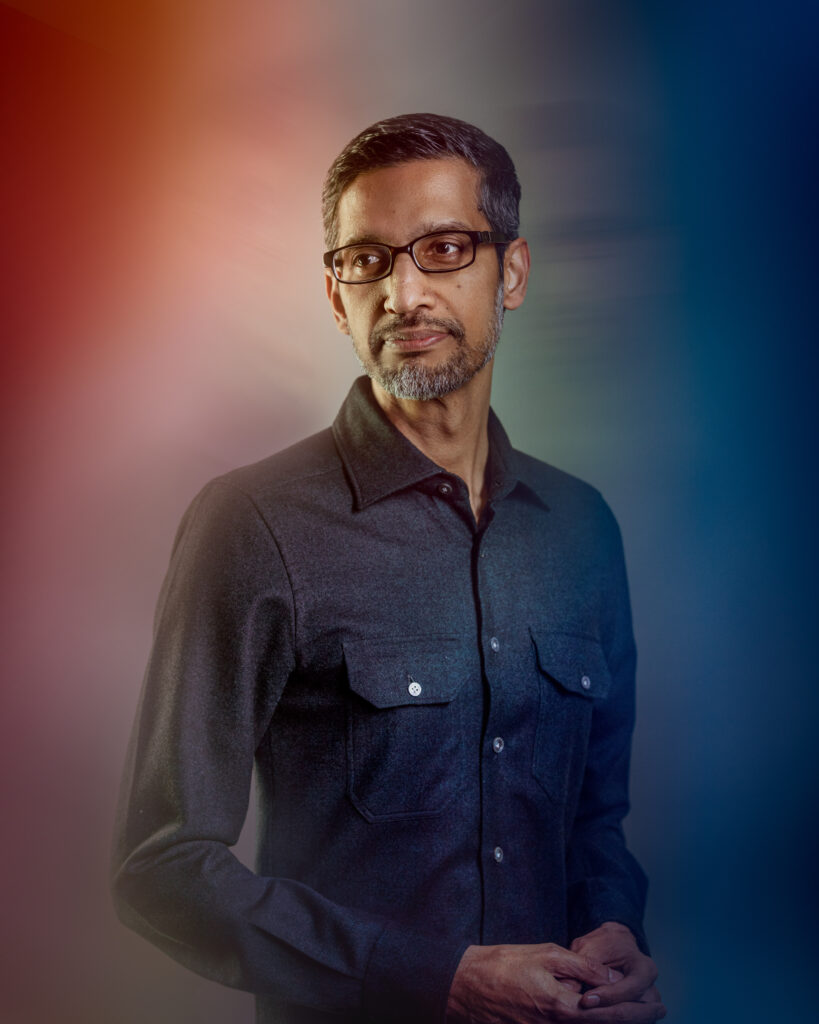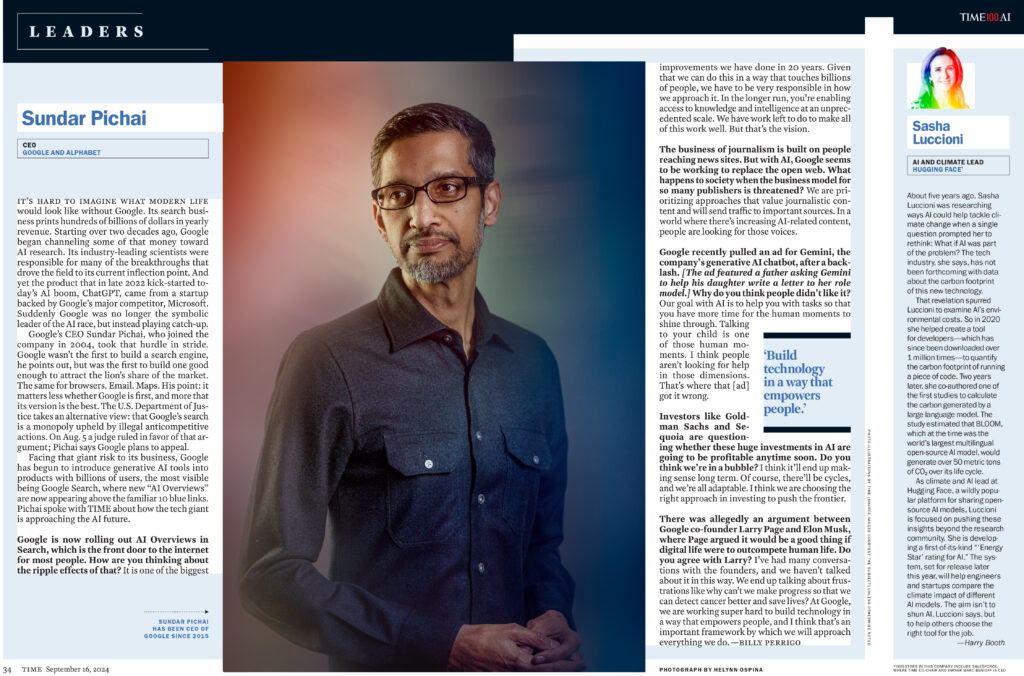Thoughts, Tidbits, Takes, Triumphs, and BTS
Dispatches From Somewhere In Between
AI, Photography, and Innovation: Sundar Pichai for TIME’s 100 Most Influential People in AI
Posted in:

Last year, I had the opportunity to photograph Sundar Pichai, CEO of Google, during a time when AI was already making waves in nearly every industry, including photography. Now, one of those images has been published in TIME Magazine as part of their feature on the 100 Most Influential People in AI, making this moment even more significant.
The article explores AI’s potential and the ethical responsibilities that come with it—a theme that resonates with me as I reflect on how AI is influencing my own work. Seeing my photo included in a conversation about technology’s future is a reminder of the fast-paced changes we’re living through.
AI has become a powerful tool in photography, not as a replacement for creativity but as a resource for ideation. In my own process, I’ve started using AI to spark new ideas and generate mood boards. While it hasn’t replaced the hands-on aspects of capturing a story, it’s enhancing the way I approach shoots, providing new ways to visualize concepts. What excites me most is how AI can help refine the technical aspects of photography, leaving more room to focus on the emotion and narrative behind each image. It’s a tool for expanding possibilities, not limiting them.

Photographing Sundar Pichai was a career milestone for me. It wasn’t just about capturing a high-profile figure but about the deeper connection between technology and creativity. During the shoot, I couldn’t help but think about how AI is shaping both fields, blurring the line between tech and art. Now that this portrait is published in TIME, it feels like a full-circle moment. The image sits within a broader conversation about AI’s impact—a topic that’s driving changes in the world of photography, too. It’s exciting to be part of this evolution, as photography moves beyond just capturing moments to becoming a dynamic tool for storytelling in an AI-driven world.
Looking ahead, AI’s influence on photography will likely grow, not by replacing photographers but by enhancing our ability to push creative boundaries. We’ll have more freedom to focus on the artistry and emotion behind images, while AI helps refine technical aspects. For me, the future of visual storytelling is about embracing these new tools to stay ahead of the curve, while never losing sight of the magic that photography brings—capturing real moments, with or without AI.
This experience has reinforced the importance of staying curious and open to new tools like AI. As the world of visual storytelling evolves, I’m excited to see where it takes us, especially as technology continues to intersect with creativity.